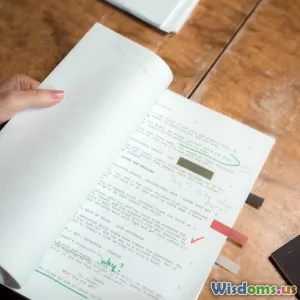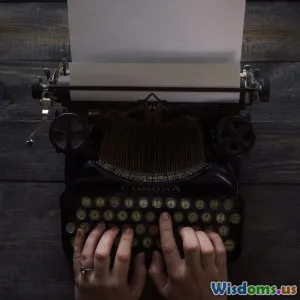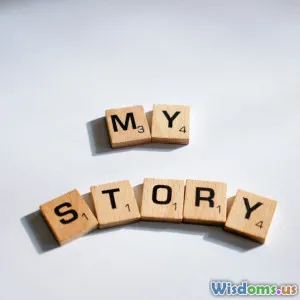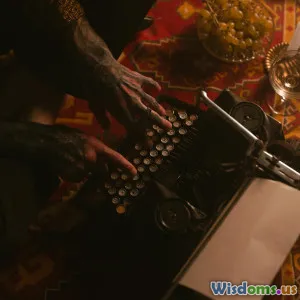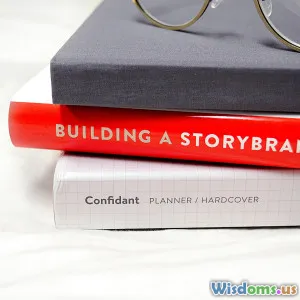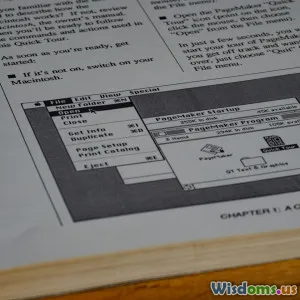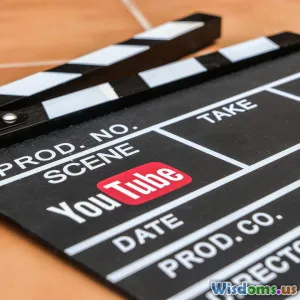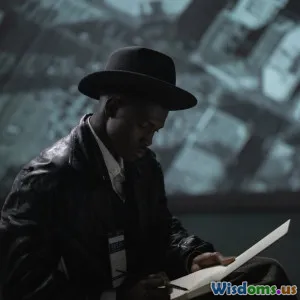
Ten Inspiring Writing Styles Every Creative Should Try
13 min read Explore ten transformative writing styles that can unlock creative potential for writers, freelancers, and artists seeking fresh, inspiring narrative approaches. (0 Reviews)
Ten Inspiring Writing Styles Every Creative Should Try
Introduction
Would you paint with only one color if your canvas allowed a spectrum? For writers, style is the vibrant palette from which meaning, mood, and curiosity emerge. Yet, many creatives—novelists, bloggers, marketers, and poets—sometimes stick to comfortable routines, missing the revolutionary surge that a new writing style can offer. Infusing fresh methods into your work isn’t just an artistic experiment; it’s a catalyst for self-discovery and creative mastery.
In this guide, we’ll explore ten inspiring writing styles, each packing unique energy and transformative potential. Whether you seek to rouse readers’ emotions, distill complex messages, or paint entire universes with your prose, these approaches can shift your perspective and supercharge your storytelling. Ready to revitalize your writing and dig into methods beloved by trailblazers new and old? Let’s dive in.
1. Minimalist Writing: The Power of Less
Minimalism strips writing to its essentials. Sentences are crisp. Words are precisely chosen. Descriptions, when they appear, shimmer with clarity. The minimalist style asks writers to trust the reader’s intelligence—less is more.
Examples:
- Ernest Hemingway often showcased emotional complexity with pared-down prose, saying, “All you have to do is write one true sentence. Write the truest sentence that you know.”
- Contemporary blogs like Zen Habits thrive on minimalism, delivering practical life advice in refreshingly spare language.
When to Try: Choose minimalism when your message benefits from emotional restraint or you want readers to fill in the blanks. Minimalist writing can quicken pace, suit flash fiction, or charge marketing copy—making every word pull its weight.
Tip: Edit ruthlessly. After your draft, cut unnecessary adjectives, adverbs, and redundant explanations.
2. Lyrical Prose: Infusing Musicality into Words
Lyrical prose leans on rhythm, imagery, and sound—words flow with poetic touch. This style transforms basic exposition into an aesthetic experience.
Examples:
- Virginia Woolf: Her novel To the Lighthouse mesmerizes with contemplative, almost musical narration ("What is the meaning of life? That's all—a simple question; one that tends to close in on one with years...").
- Nobel laureate Toni Morrison enveloped social themes inside lush, rhythmic writing.
When to Try: Use lyrical prose when atmosphere trumps plot or when your story craves sensory immersion. Creative nonfiction, memoir, and literary fiction benefit tremendously.
Tip: Read your words aloud to notice patterns, cadence, and flow. Insert metaphors or alliteration thoughtfully to enhance the musicality.
3. Stream of Consciousness: Channeling Inner Worlds
Stream of consciousness writing attempts to mirror the natural, non-linear workings of human thought. Sentences may jump, diverge, or loop mid-idea, immersing readers in the character’s psyche.
Examples:
- James Joyce’s Ulysses and William Faulkner’s The Sound and the Fury approach consciousness in unfiltered torrents.
- In recent years, writers like Ottessa Moshfegh (My Year of Rest and Relaxation) apply this style for psychological insight.
When to Try: Employ this style for stories delving into character psychology or fragmented memories, or to represent chaos or revelation.
Tip: Let thoughts flow naturally before editing, resisting the urge to over-correct. Trust that authenticity, not polish, will convey emotional truth.
4. Epistolary Style: Letting Letters Reveal the Truth
Epistolary writing tells a story through diary entries, letters, texts, or emails. The form offers immediacy and intimacy while allowing multiple perspectives.
Examples:
- Bram Stoker’s Dracula unfolds via letters and journal entries, deepening suspense.
- Alice Walker’s The Color Purple connects readers to protagonist Celie through haunting, unstylized letters.
- “Dear Committee Members” by Julie Schumacher: A campus satire built entirely from recommendation letters.
When to Try: This style suits stories about separation, longing, voyeurism, or unreliable narrators. Its fragmentary nature enables creative pacing.
Tip: Focus on voice—each diary, letter, or text should sound like a distinct, real individual.
5. Magical Realism: Blending the Mundane and the Marvellous
Magical realism weaves supernatural or fantastical elements into ordinary settings as if they’re completely natural. The hallmark? Neither writer nor characters find the magic remarkable—it simply "is."
Examples:
- Gabriel García Márquez’s One Hundred Years of Solitude and Isabel Allende’s The House of the Spirits are Latin American classics that make ghosts, flying carpets, and premonitions feel as ordinary as rain.
- Helen Oyeyemi and Salman Rushdie use magical realism to challenge societal norms and politics.
When to Try: For stories with folklore, symbolism, or to express truths that prose alone struggles to contain, this style is invaluable.
Tip: Make surreal events as credible as the real—focus on emotional truth over shock value.
6. Satirical Style: Critique Wrapped in Wit
Satire exaggerates, parodies, or lampoons to spark laughter—and often to prod reflection or social change. The writer bends reality to skewer folly, hypocrisy, or injustice.
Examples:
- Classics like Jonathan Swift’s A Modest Proposal and modern shows like The Onion both use biting wit to lay bare societal issues.
- George Saunders, in collections like CivilWarLand in Bad Decline, crafts stories brimming with absurdity to highlight very real concerns.
When to Try: If you are frustrated by bureaucracy, politics, or cultural absurdities, satire is your best megaphone.
Tip: Wit succeeds when it remains grounded in truth. Exaggerate, but let the reader grasp the real-life parallel.
7. Journalistic Style: Truth with Precision
Journalistic style relies on clarity, objectivity, and factual backbone. It emphasizes the 5 W’s (Who, What, When, Where, Why), and often forgoes overt opinion.
Examples:
- Investigative features in The New York Times, The Guardian, or NPR
- Nonfiction classics like Truman Capote’s In Cold Blood, blending reportage and literary flair
When to Try: This approach is ideal for essays, feature articles, reports, and almost any piece where accuracy and trust matter.
Tip: Anchor writing in verifiable data, interviews, or first-hand observations. Let facts do the heavy lifting, but craft engaging ledes and strong closings.
8. Dialogic Style: Letting Characters Speak
Dialogic writing is driven by conversation—character voices, banter, argument, and subtext take center stage. Here, “show, don’t tell” rules all.
Examples:
- Aaron Sorkin’s screenplays (The West Wing), where rapid-fire, witty dialogue fuels narrative.
- Pulitzer winners like Annie Baker’s plays build stories almost exclusively through seemingly mundane—but revelatory—speech.
- Many vibrant short stories by Raymond Carver unfold with little narration, but dynamic, suggestive exchanges.
When to Try: Employ dialogic writing when characterization, conflict, or pacing thrive on spoken interaction or dramatic tension.
Tip: Read your dialogue aloud; ensure every line sounds authentic and reveals more than words alone.
9. Visual-Driven Writing: Show with Structure
Some writers pack visual punch not only by description, but by layout, structure, or arrangement—think poetry, experimental fiction, and non-linear texts that use white space as language.
Examples:
- E. E. Cummings’ poetry: typographical experiments embellish raw emotion.
- Mark Z. Danielewski’s House of Leaves uses unconventional formatting to build atmosphere and suspense.
- Graphic novels—where text and art merge, as in Alison Bechdel’s Fun Home—offer a different visual reading experience.
When to Try: For poems, creative nonfiction, or fiction seeking to play with format, or when you want the medium to shape the message (for example, mimicking chaos through jumbled text structure).
Tip: Let the structure serve content, not distract from it. Often, sparing use of inventive layout multiplies impact.
10. Persuasive Style: Move Readers to Act
Persuasive writing marshals logic, rhetoric, emotion, and evidence to coax readers into fresh beliefs or tangible actions. Aged for centuries in speeches, manifestos, marketing copy, and opinion columns, this style works where conviction rules.
Examples:
- Martin Luther King Jr.’s "I Have a Dream" speech: elegance, repetition, and urgent truths persuade a nation.
- Digital marketing campaigns that employ compelling storytelling paired with compelling calls-to-action (CTAs) – from Apple’s product launches to activism on Change.org.
When to Try: Whenever your goal is change: social justice writing, funding appeals, calls for policy, or onboarding new customers and fans.
Tip: Start with relatable stakes (“What’s in it for the reader?”), and use narrative or data to bolster trust, ending with a memorable, repeatable message.
Conclusion: Craft Your Signature Mosaic
Writing, at its essence, is possibility. By embracing an unfamiliar style, creatives challenge boundaries—not just on the page, but within themselves. Whether you favor storytelling swept by magic, chiastic dialogue, or the diamond-cut efficiency of journalistic prose, your experiments linger, emboldening your voice for every bold draft yet to come.
Try these styles not only to grow your toolkit but to see your ideas—and the world—with fresh reverence. Each approach is an invitation: dig deeper, play harder, and trust that your words, like any palette, shine brightest when risk meets curiosity.
Ready to transform your next project? Pick a style above, and write the opening sentence of the story only you can tell. The world is eager for your alchemy.
Further Reading & Exercises
- Challenge Yourself: Try writing the same short story in at least three different styles above. Compare impact and mood.
- Recommended Books:
- On Writing by Stephen King
- Bird by Bird by Anne Lamott
- Steering the Craft by Ursula K. Le Guin
- Online Communities:
Your next creative breakthrough is just one wild style away.
Rate the Post
User Reviews
Popular Posts










